Characterization of Fresh and Cured Properties of Polymer Concretes Based on Two Metallurgical Wastes
Abstract
:Featured Application
Abstract
1. Introduction
2. Materials and Methods
2.1. Materials
2.2. Methods
3. Results and Discussion
3.1. Fresh Physical Characteristics
3.2. Cured Physical Properties
3.3. Mechanical Stength
4. Conclusions
- Nonconventional targets required a higher resin dosage than sand to reach the workability required for the manufacturing process, due to their high content of fine particles.
- Nonconventional targets showed higher length plastic shrinkages compared with those of sand, but maintained it under pure a resin value.
- The PPC manufactured densities depended on the target materials’ bulk densities and granulometries. They both determine the interparticles’ pore size and condition the resin dosage required for the workability of fresh mixes, as resin can partially replace fine target particles.
- In general, the mechanical properties of the nonconventional targets were adequate, as AF obtained close results to those obtained by the sand sample, while LS combinations clearly overcame them, for the flexural strength as well as for the compressive strength tests.
Author Contributions
Funding
Acknowledgments
Conflicts of Interest
References
- Ferdous, W.; Manalo, A.; Aravinthan, T.; Van Erp, G. Properties of epoxy polymer concrete matrix: Effect of resin-to-filler ratio and determination of optimal mix for composite railway sleepers. Constr. Build. Mater. 2016, 124, 287–300. [Google Scholar] [CrossRef]
- Toufigh, V.; Hosseinali, M.; Shirkhorshidi, S.M. Experimental study and constitutive modeling of polymer concrete’s behavior in compression. Constr. Build. Mater. 2016, 112, 183–190. [Google Scholar] [CrossRef]
- Bulut, H.A.; Şahin, R. A study on mechanical properties of polymer concrete containing electronic plastic waste. Compos. Struct. 2017, 178, 50–62. [Google Scholar] [CrossRef]
- Ribeiro, M.C.S.; Meira-Castro, A.C.; Silva, F.G.; Santos, J.; Meixedo, J.P.; Fiúza, A.; Dinis, M.L.; Alvim, M.R. Re-use assessment of thermoset composite wastes as aggregate and filler replacement for concrete-polymer composite materials: A case study regarding GFRP pultrusion wastes. Resour. Conserv. Recycl. 2015, 104, 417–426. [Google Scholar] [CrossRef] [Green Version]
- Commission, E. CDW: Material Recovery & Backfilling; European Commission: Brussels, Belgium, 2011. [Google Scholar]
- Barbuta, M.; Rujanu, M.; Nicuta, A. Characterization of Polymer Concrete with Different Wastes Additions. Procedia Technol. 2016, 22, 407–412. [Google Scholar] [CrossRef] [Green Version]
- Martínez-Barrera, G.; Menchaca-Campos, C.; Gencel, O. Polyester polymer concrete: Effect of the marble particle sizes and high gamma radiation doses. Constr. Build. Mater. 2013, 41, 204–208. [Google Scholar] [CrossRef]
- Saribiyik, M.; Piskin, A.; Saribiyik, A. The effects of waste glass powder usage on polymer concrete properties. Constr. Build. Mater. 2013, 47, 840–844. [Google Scholar] [CrossRef]
- Hong, S.; Kim, H.; Park, S.K. Optimal mix and freeze-thaw durability of polysulfide polymer concrete. Constr. Build. Mater. 2016, 127, 539–545. [Google Scholar] [CrossRef]
- Khalid, N.H.A.; Hussin, M.W.; Mirza, J.; Ariffin, N.F.; Ismail, M.A.; Lee, H.S.; Mohamed, A.; Jaya, R.P. Palm oil fuel ash as potential green micro-filler in polymer concrete. Constr. Build. Mater. 2016, 102, 950–960. [Google Scholar] [CrossRef] [Green Version]
- Lokuge, W.P.; Aravinthan, T. Mechanical Properties of Polymer Concrete With Different Types of Resin. In Proceedings of the 22nd Australasian Conference on the Mechanics of Structures and Materials (ACMSM 22), Sydney, Australia, 11–14 December 2012; pp. 1–6. [Google Scholar]
- Wang, J.; Dai, Q.; Guo, S.; Si, R. Mechanical and durability performance evaluation of crumb rubber-modified epoxy polymer concrete overlays. Constr. Build. Mater. 2019, 203, 469–480. [Google Scholar] [CrossRef]
- Sosoi, G.; Barbuta, M.; Serbanoiu, A.A.; Babor, D.; Burlacu, A. Wastes as aggregate substitution in polymer concrete. Procedia Manuf. 2018, 22, 347–351. [Google Scholar] [CrossRef]
- Lam, M.N.T.; Le, D.H.; Jaritngam, S. Compressive strength and durability properties of roller-compacted concrete pavement containing electric arc furnace slag aggregate and fly ash. Constr. Build. Mater. 2018, 191, 912–922. [Google Scholar] [CrossRef]
- Guo, Y.; Xie, J.; Zhao, J.; Zuo, K. Utilization of unprocessed steel slag as fine aggregate in normal- and high-strength concrete. Constr. Build. Mater. 2019, 204, 41–49. [Google Scholar] [CrossRef]
- Sun, J.; Feng, J.; Chen, Z. Effect of ferronickel slag as fine aggregate on properties of concrete. Constr. Build. Mater. 2019, 206, 201–209. [Google Scholar] [CrossRef]
- Cardoso, C.; Camões, A.; Eires, R.; Mota, A.; Araújo, J.; Castro, F.; Carvalho, J. Using foundry slag of ferrous metals as fine aggregate for concrete. Resour. Conserv. Recycl. 2018, 138, 130–141. [Google Scholar] [CrossRef]
- AENOR UNE 146512:2018. Test for Aggregates. Determination of the Potential Reactivity of Aggregates. Chemical Method. Determination of the Reactivity Alkali-Silica and Alkali-Silicate; Asociación Española de Normalización: Madrid, Spain, 2018. [Google Scholar]
- AENOR UNE-EN 1015-3:2000. Methods of Test for Mortar for Masonry—Part 3: Determination of Consistence of Fresh Mortar (by Flow Table); Asociación Española de Normalización: Madrid, Spain, 2000. [Google Scholar]
- AENOR UNE-EN 12390-1:2013. Testing Hardened Concrete—Part 1: Shape, Dimensions and Other Requirements for Specimens and Moulds; Asociación Española de Normalización: Madrid, Spain, 2013. [Google Scholar]
- AENOR UNE-EN 12390-7:2009. Testing Hardened Concrete—Part 7: Density of Hardened Concrete; Asociación Española de Normalización: Madrid, Spain, 2009. [Google Scholar]
- AENOR UNE-EN 12390-5. Testing Hardened Concrete—Part 5: Flexural Strength of Test Specimens; Asociación Española de Normalización: Madrid, Spain, 2009. [Google Scholar]
- AENOR UNE-EN 12390-13:2014. Testing Hardened Concrete—Part 13: Determination of Secant Modulus of Elasticity in Compression; Asociación Española de Normalización: Madrid, Spain, 2014. [Google Scholar]
- AENOR UNE-EN 12390-3:2009. Testing Hardened Concrete—Part 3: Compressive Strength of Test Specimens; Asociación Española de Normalización: Madrid, Spain, 2009. [Google Scholar]
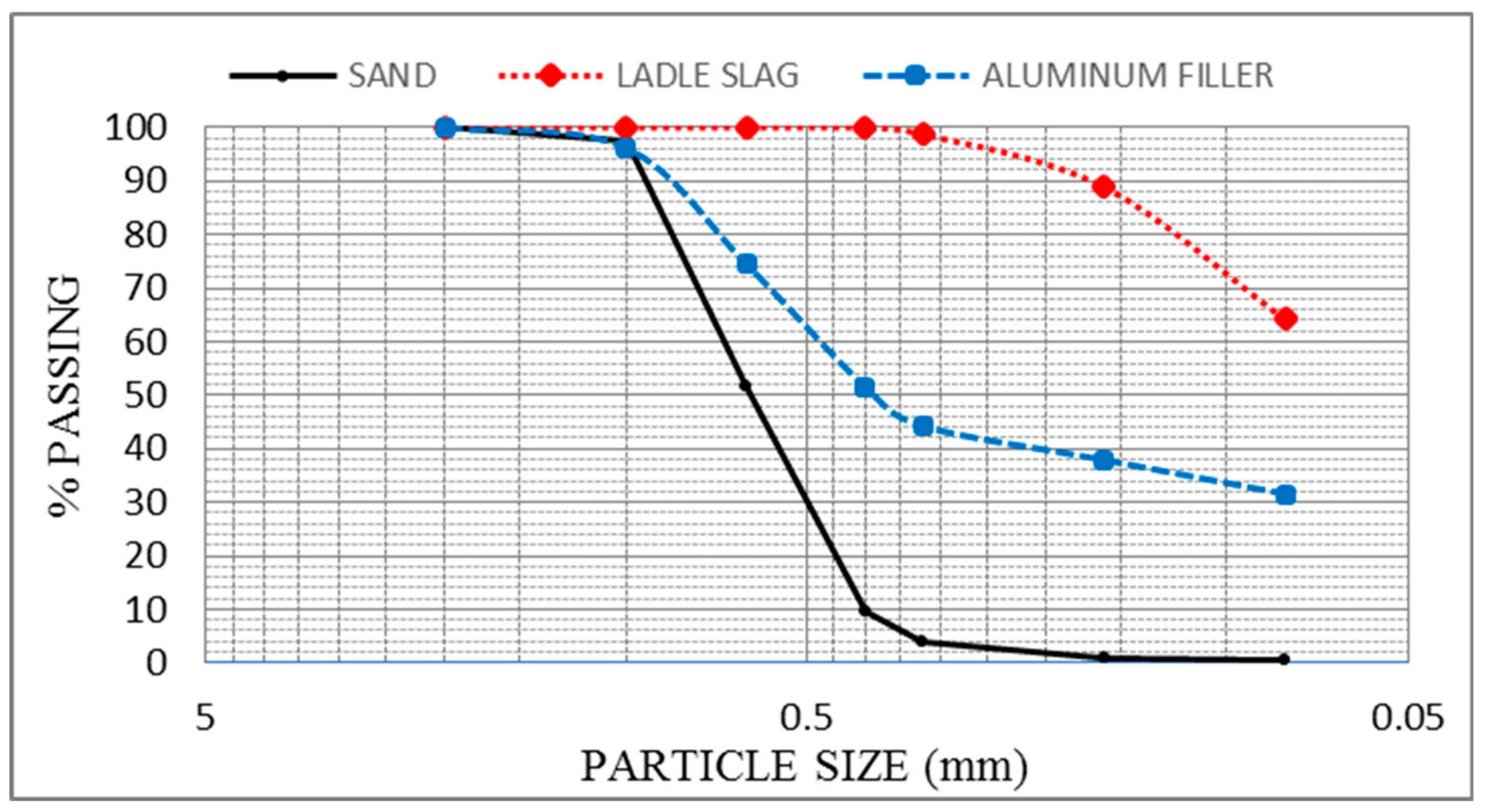
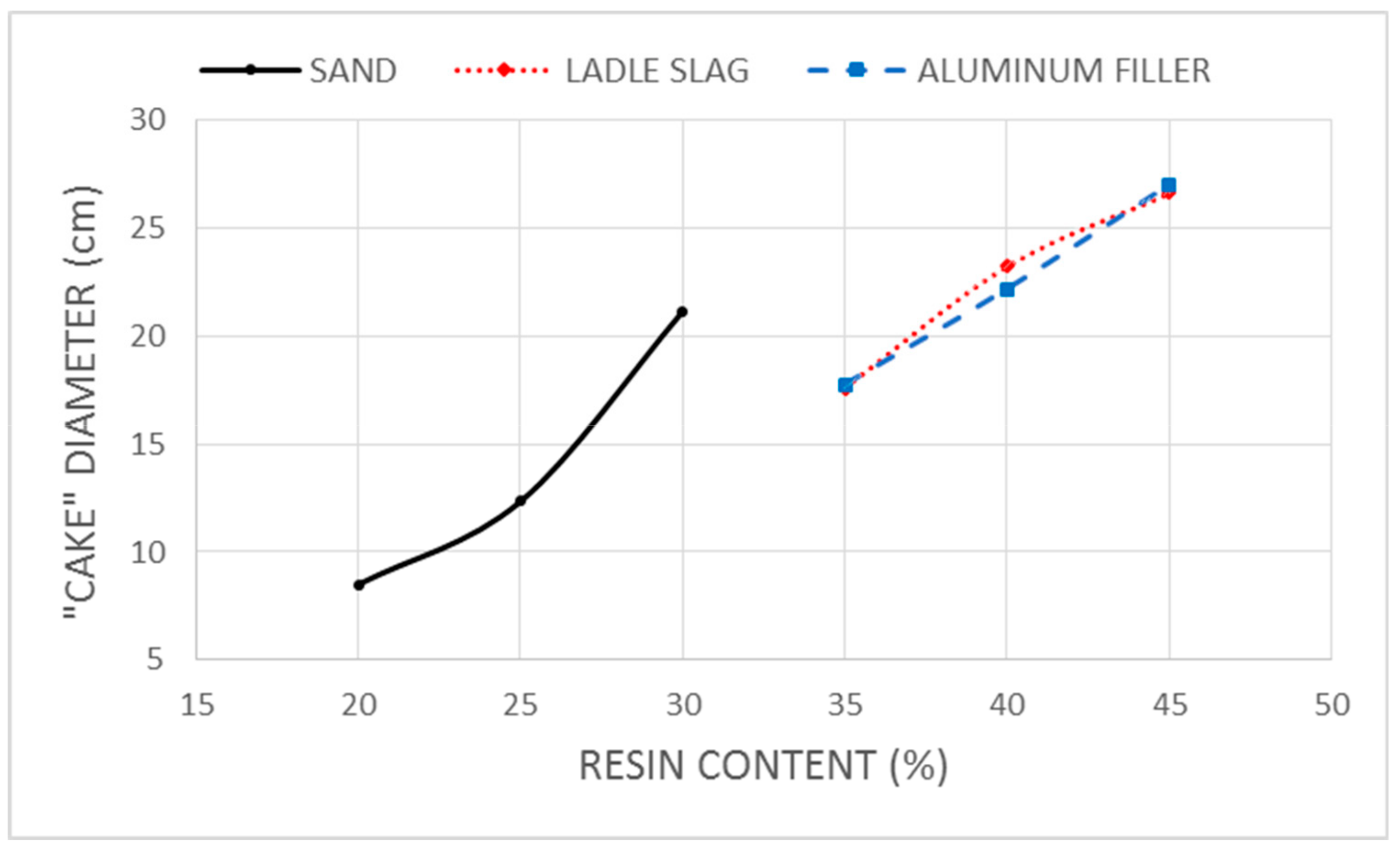



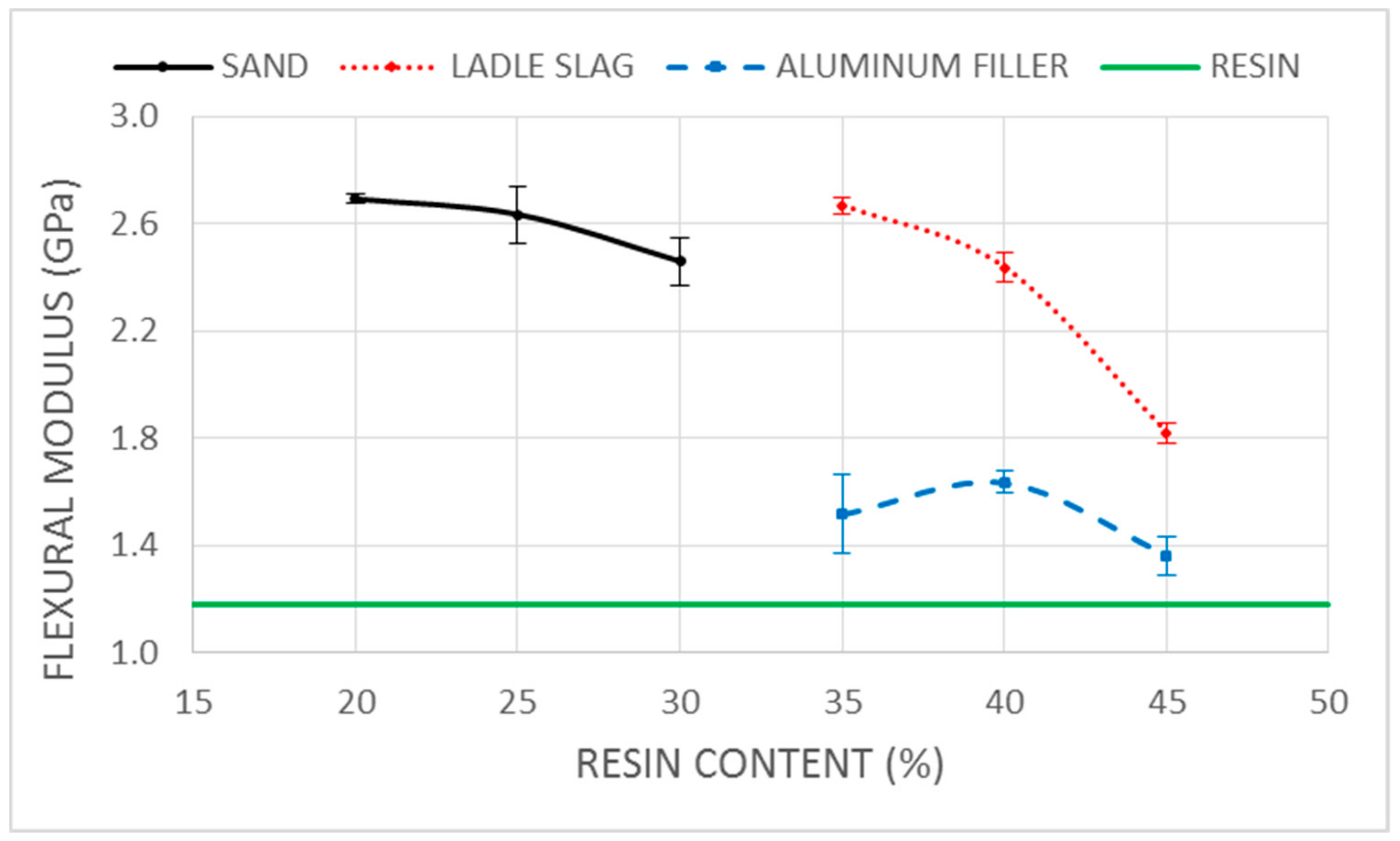
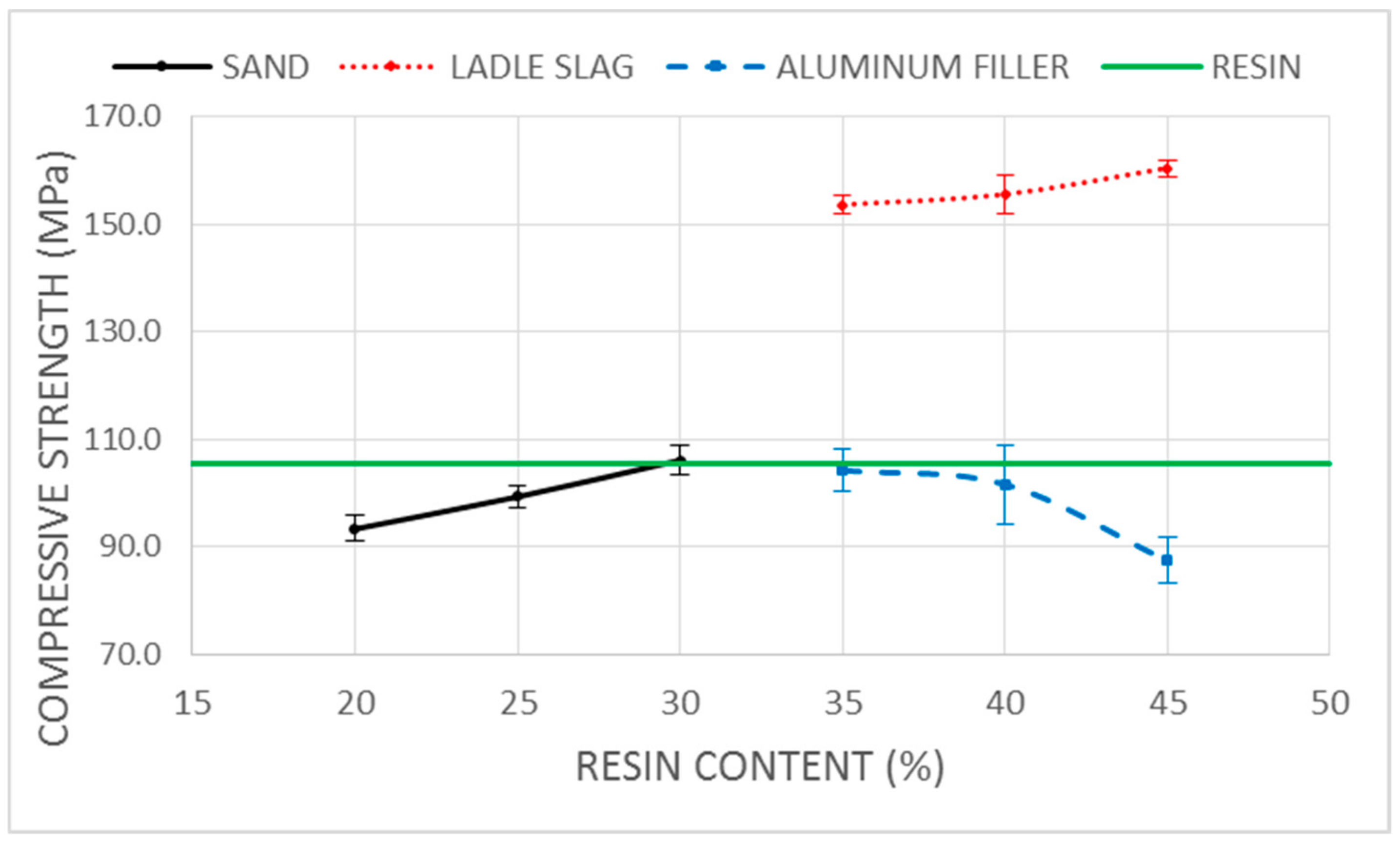

| Characteristic | Units | Value |
|---|---|---|
| Liquid resin | ||
| Viscosity at 25 °C | dPas | 3.5–4.5 |
| Specific gravity | g/cm3 | 1.10 |
| Volatile content | % | 36–40 |
| Acidity index | mg KOH/g | 19–23 |
| Cured resin | ||
| Deformation temperature under load | °C | 65 |
| Absorption after 24 h of immersion in water | mg | 15 |
| Chemical Composition | |||||
|---|---|---|---|---|---|
| Ladle Slag | Alumina Filler | Sand | |||
| Oxides | (%) | Oxides | (%) | Oxides | (%) |
| CaO | 57 | Al2O3 | 64 | SiO2 Al2O3 | 98 1 |
| SiO2 | 21 | MgO | 7 | ||
| Al2O3 | 7 | SiO2 | 7 | ||
| MgO | 6 | CaO | 2 | ||
| F | 5 | Na2O | 2 | ||
| SO3 | 2 | F | 1 | ||
| Fe2O3 | 1 | Fe2O3 | 1 | ||
| Mineralogical Composition | |||||
| Periclase Olivine Calcium silicate oxide Calcium silicate Calcium aluminum oxide fluoride Calcium silicate oxide | Gibbsite Nordstrandite Aluminum oxide | Quartz | |||
| Bulk Density (g/cm3) | |||||
| 1.372 | 1.094 | 1.531 | |||
| Particles Under 80 µ (%) | |||||
| 64.23 | 31.40 | 0.58 | |||
| Color (based on the Munsell Soil Color Chart) | |||||
| 2.5 Y 7/1 | 2.5 Y 5/1 | 2.5 Y 7/4 | |||
| Alkali–Silica Reaction (UNE 146512) [18] | |||||
| Not reactive | Not reactive | Not reactive | |||
| Pictures | |||||
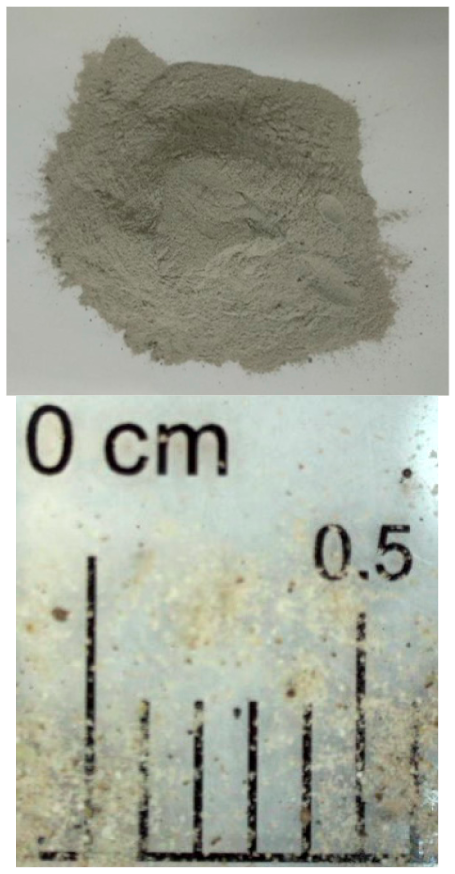 | 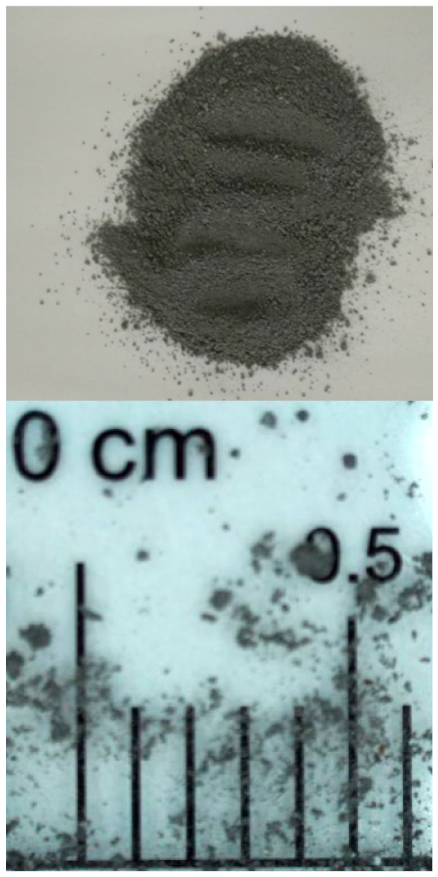 |  | |||
| Characteristic Categories | Tests | Reference Standard |
|---|---|---|
| Fresh characteristics | Resin content limits | - |
| Fresh consistency | EN 1015-3 [19] | |
| Cured physical properties | Retraction | EN 12390-1 [20] |
| Density | EN 12390-7 [21] | |
| Mechanical strength | Flexural strength | EN 12390-5 [22] |
| Flexural modulus of elasticity | EN 12390-5 [22] | |
| Compressive strength | EN 12390-13 [23] | |
| Compressive modulus of elasticity | EN 12390-3 [24] |
© 2020 by the authors. Licensee MDPI, Basel, Switzerland. This article is an open access article distributed under the terms and conditions of the Creative Commons Attribution (CC BY) license (http://creativecommons.org/licenses/by/4.0/).
Share and Cite
Seco, A.; Echeverría, A.M.; Marcelino, S.; García, B.; Espuelas, S. Characterization of Fresh and Cured Properties of Polymer Concretes Based on Two Metallurgical Wastes. Appl. Sci. 2020, 10, 825. https://doi.org/10.3390/app10030825
Seco A, Echeverría AM, Marcelino S, García B, Espuelas S. Characterization of Fresh and Cured Properties of Polymer Concretes Based on Two Metallurgical Wastes. Applied Sciences. 2020; 10(3):825. https://doi.org/10.3390/app10030825
Chicago/Turabian StyleSeco, Andres, Angel Maria Echeverría, Sara Marcelino, Benat García, and Sandra Espuelas. 2020. "Characterization of Fresh and Cured Properties of Polymer Concretes Based on Two Metallurgical Wastes" Applied Sciences 10, no. 3: 825. https://doi.org/10.3390/app10030825





